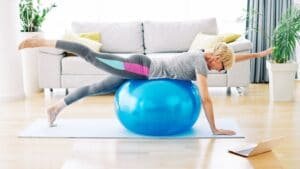
Bladder issues are something that affects many women going through menopause, with recent studies showing the prevalence of urinary incontinence and overactive bladder syndrome significantly increases for women in postmenopausal age.
Consequently, many women believe that urinary incontinence is an inevitable part of the aging process, yet it isn’t, and can be highly preventable and treatable if certain steps are taken.
According to this study, by 2030, the world population of menopausal and postmenopausal women is projected to increase to 1.2 billion, with 47 million new entrants each year. Based on these numbers, now is the time for women to understand what treatments and preventative measures are available to combat OAB (Overactive Bladder) syndrome.
If left untreated, OAB can interfere with work, going out with friends, exercise and sleep – resulting in more serious complications down the road.
How Does Menopause Impact the Bladder?
While many women think bladder issues develop during menopause, symptoms usually begin in the perimenopause stage, or menopause transition, as levels of estrogen and testosterone start to drop.
This causes the urethral and vaginal tissues to thin and pelvic floor muscles to relax and by the time a woman officially reaches menopause, tissues around the bladder and urethra are so thin that overactive bladder syndrome and stress incontinence has developed.
During this perimenopause phase women can start to experience bladder issues, including:
- sudden urges to urinate
- increase in urinary frequency
- having difficulty getting to a bathroom without leaking urine first
- Nocturia, which is needing to urinate frequently at night
Preventative Measures
One of the best ways to prevent incontinence and OAB is to strengthen the pelvic floor muscles and core. This not only includes the Kegel exercises – which involves engaging the pelvic muscles as if you were holding in your urine for around 10 seconds and then repeat – but also exercises in the hips, back, and core are helpful.
Abdominal strength and hip security help ease tension and debilitation in the pelvic floor, and the stronger these muscles are by the time you reach the perimenopause stage, the less likely you are to experience bladder weakness. If unsure of how to properly exercise these muscles, consulting a pelvic floor physical therapist is the best way to ensure you are practicing correctly.
For those already in the perimenopause or even post-menopause stage, these exercises can still help alleviate OAB symptoms and manage some of your incontinence. While they may not be able to rid the body of bladder weakness altogether, strengthening your pelvic floor will certainly ease symptoms and make day-to-day life more enjoyable.
When to See Your Doctor
For those in the post-menopause or perimenopause phase who are experiencing severe bladder issues and have had little or no success in managing incontinence through holistic approaches like exercise and avoidance of trigger foods, there are certain continence medications available.
A good rule of thumb is to see your health care provider if you are no longer able to complete everyday tasks due to incontinence or having to accommodate regular activities. You should also consult your medical provider if you are experiencing frequent urine leakage or your sleep schedule is being constantly disrupted by the urge to urinate.
Let’s Have a Conversation:
What have you done to improve your pelvic floor strength? Has this helped with bladder leakage? Have you had to consult with your doctor about OAB?





